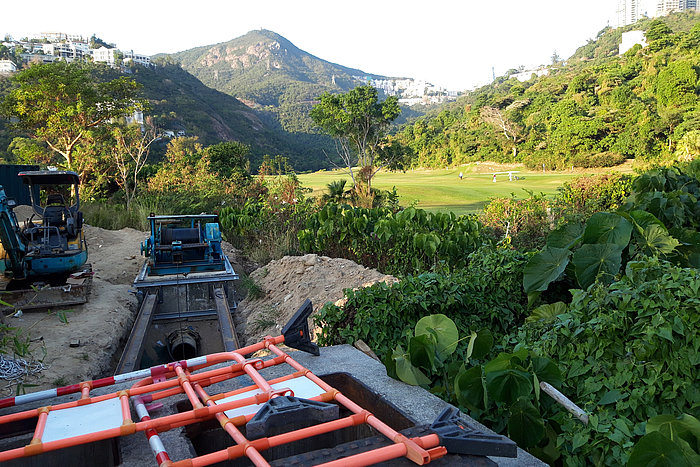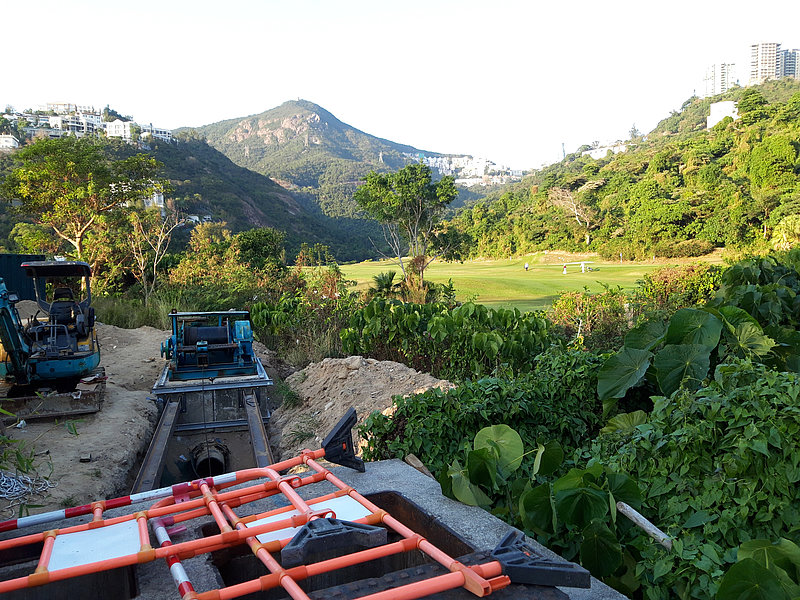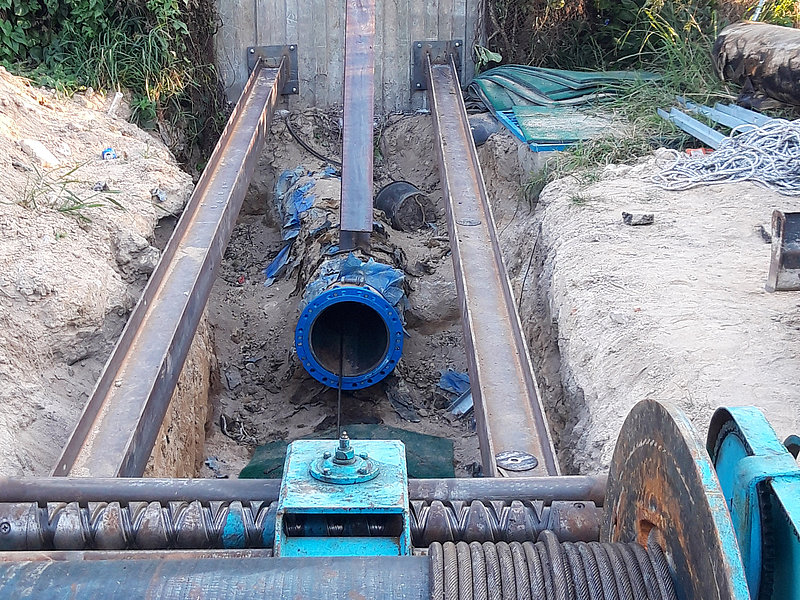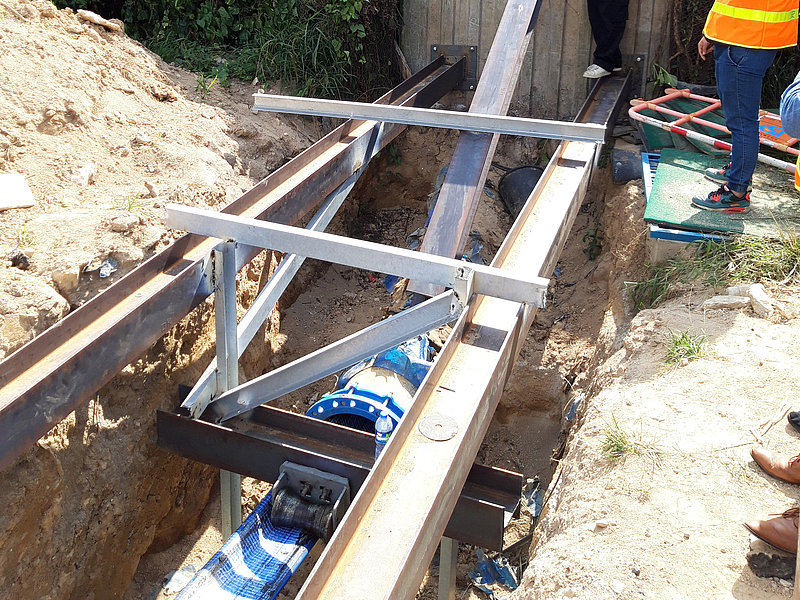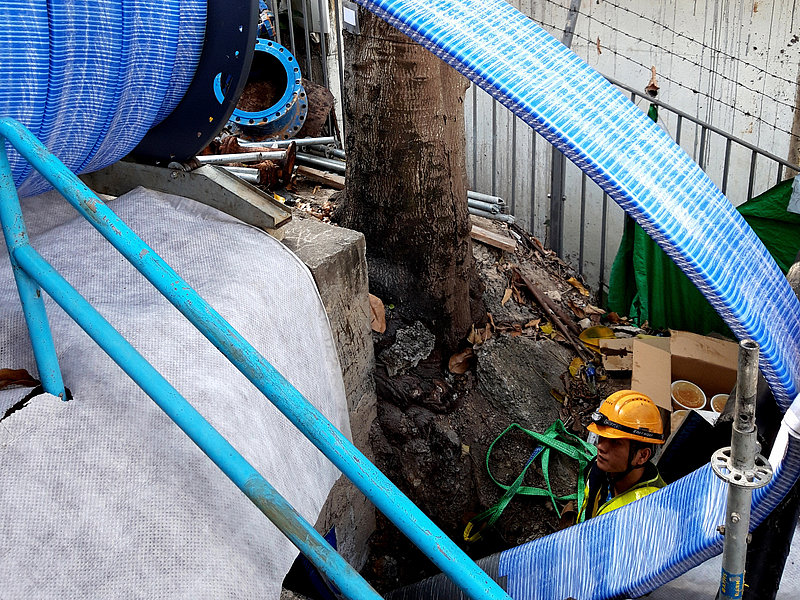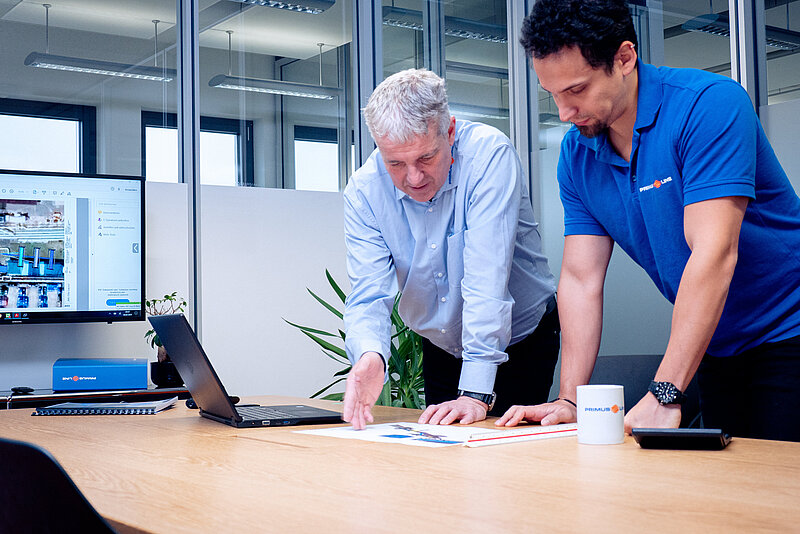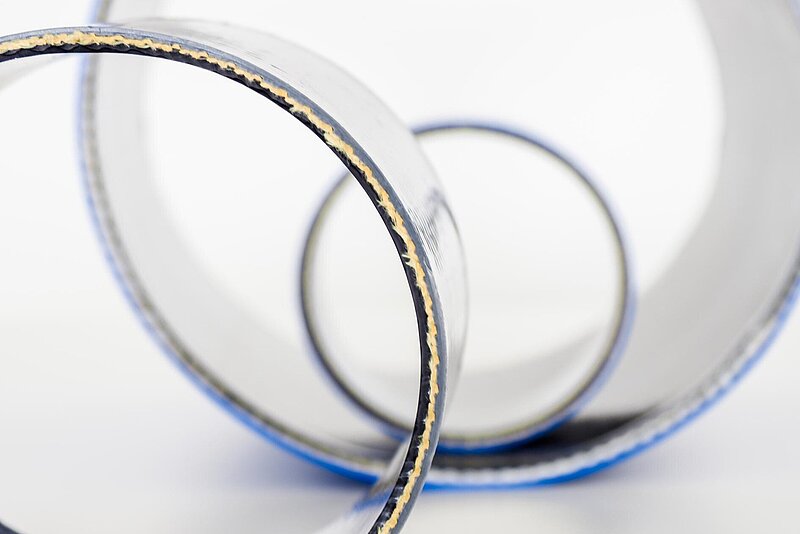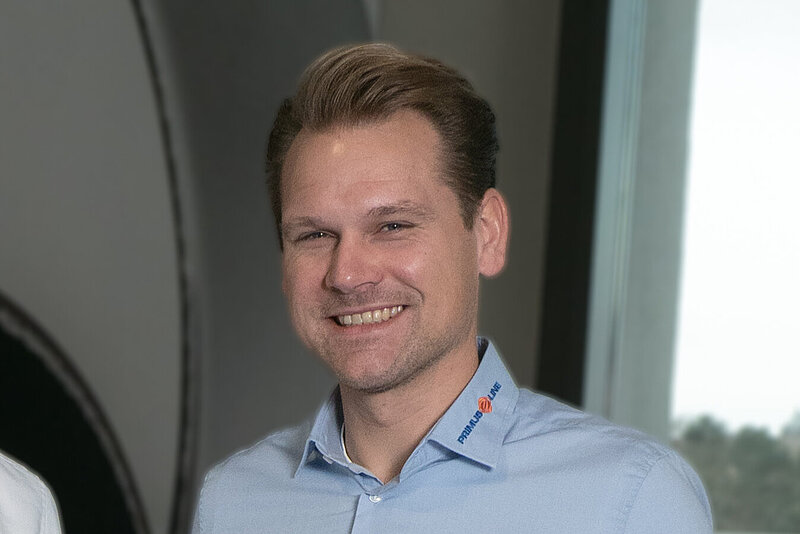The Drainage Services Department (DSD) is a department of the Hong Kong Government and responsible for stormwater drainage, sewage collection and treatment as well as flood prevention. DSD is already familiar with trenchless techniques for the repair of its pipes and deploys CIPP solutions, folded PVC and PE liners as well as machine spiral wound liners.
A DN 450 sewer pressure pipe located at Hong Kong Island had reached the end of its useful life and current techniques were technically and economically not suitable for its repair.
The network operator had to overcome the following obstacles: The ductile iron pipe stretched under a high traffic street with a length of 360 m, turning around several bends of up to 45 degrees with a bend radius of 1.5xD to a destination close to a golf course. The start point of the section to be rehabilitated is located at a pumping station and the destination point is located at an air valve placed in a maintenance chamber. The pipe is operated with 3 bar. From an execution point of view, the complete rehabilitation works including CCTV inspection, pipe cleaning, rehabilitation and reintegration into the network had to be completed in less than one week.
DSD engineers attended a live demo event of the Primus Line® system in 2017 and also followed installations with the Water Services Department (WSD). So far, over 50 individual projects were completed with WSD for the restoration of its water supply and salt water systems. In addition, the Primus Line® system has been used numerous times for the renovation of sewage pressure pipes globally. DSD finally decided to use the trenchless technology Primus Line® since the flexible liner unites all features necessary to fulfill the demands of the project.
Since the installation had to be made from chamber to chamber with limited space, it was decided to place the transport reel T-210 with the pre-folded liner at the pumping house. A small opening was made into the chamber to feed the liner into the host pipe without additional excavation works. Since the termination point is also located in a chamber with confined space, the pull-out angle would not have been suitable and the pull-out forces would have increased significantly. Hence, an excavation pit was created behind the chamber to pull out the liner in a maximum flat angle without damaging the existing chamber. The host pipe was secured. The liner was inserted by means of a pulling winch within one hour and turned into its original round shape with compressed air. The connectors were installed in the chambers and reintegrated using a spool piece. Thanks to meticulous planning, preparation and commissioning, the pipeline could be put into operation again at the intended deadline.
